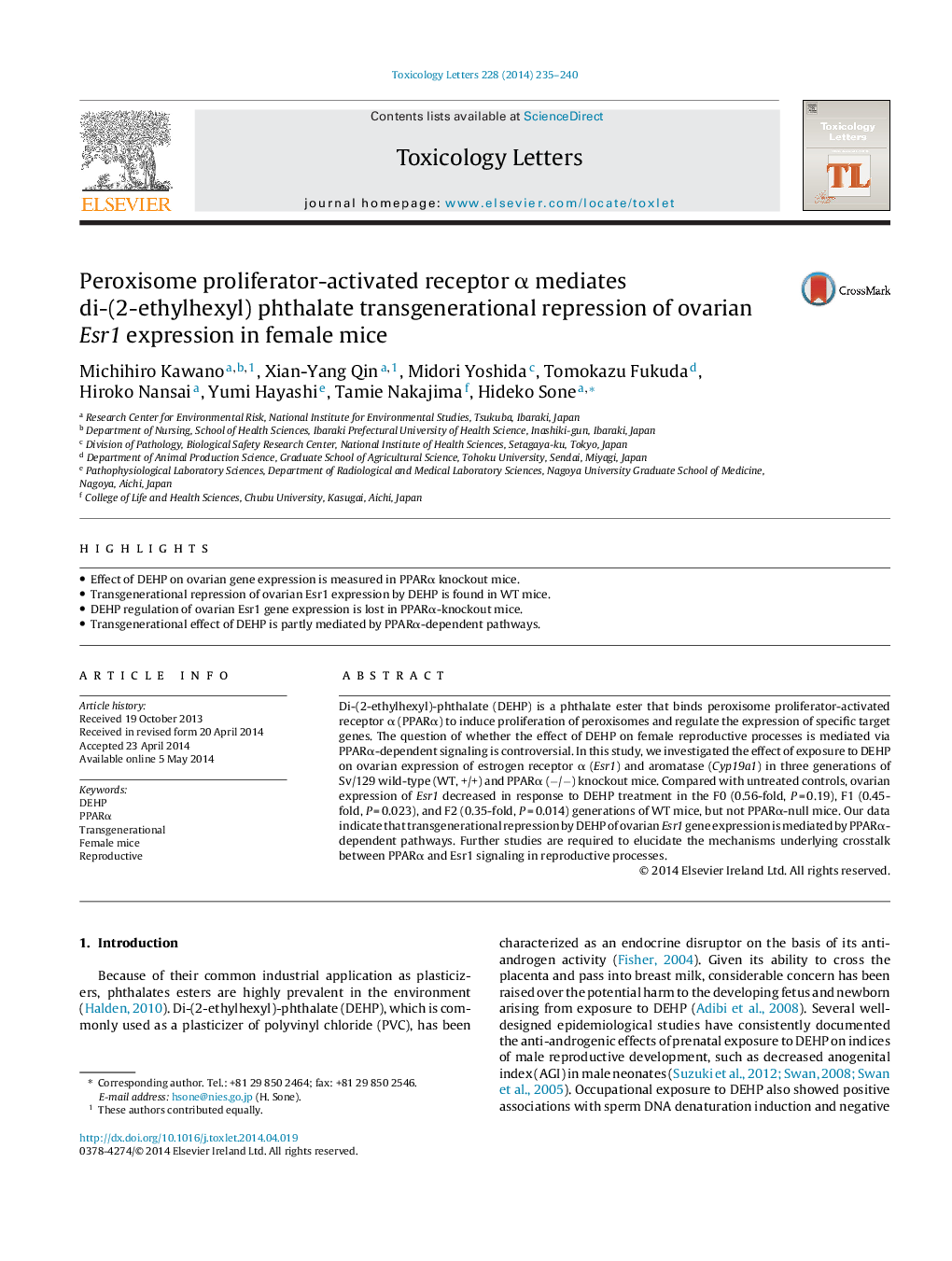| Article ID | Journal | Published Year | Pages | File Type |
|---|---|---|---|---|
| 2598946 | Toxicology Letters | 2014 | 6 Pages |
•Effect of DEHP on ovarian gene expression is measured in PPARα knockout mice.•Transgenerational repression of ovarian Esr1 expression by DEHP is found in WT mice.•DEHP regulation of ovarian Esr1 gene expression is lost in PPARα-knockout mice.•Transgenerational effect of DEHP is partly mediated by PPARα-dependent pathways.
Di-(2-ethylhexyl)-phthalate (DEHP) is a phthalate ester that binds peroxisome proliferator-activated receptor α (PPARα) to induce proliferation of peroxisomes and regulate the expression of specific target genes. The question of whether the effect of DEHP on female reproductive processes is mediated via PPARα-dependent signaling is controversial. In this study, we investigated the effect of exposure to DEHP on ovarian expression of estrogen receptor α (Esr1) and aromatase (Cyp19a1) in three generations of Sv/129 wild-type (WT, +/+) and PPARα (−/−) knockout mice. Compared with untreated controls, ovarian expression of Esr1 decreased in response to DEHP treatment in the F0 (0.56-fold, P = 0.19), F1 (0.45-fold, P = 0.023), and F2 (0.35-fold, P = 0.014) generations of WT mice, but not PPARα-null mice. Our data indicate that transgenerational repression by DEHP of ovarian Esr1 gene expression is mediated by PPARα-dependent pathways. Further studies are required to elucidate the mechanisms underlying crosstalk between PPARα and Esr1 signaling in reproductive processes.
